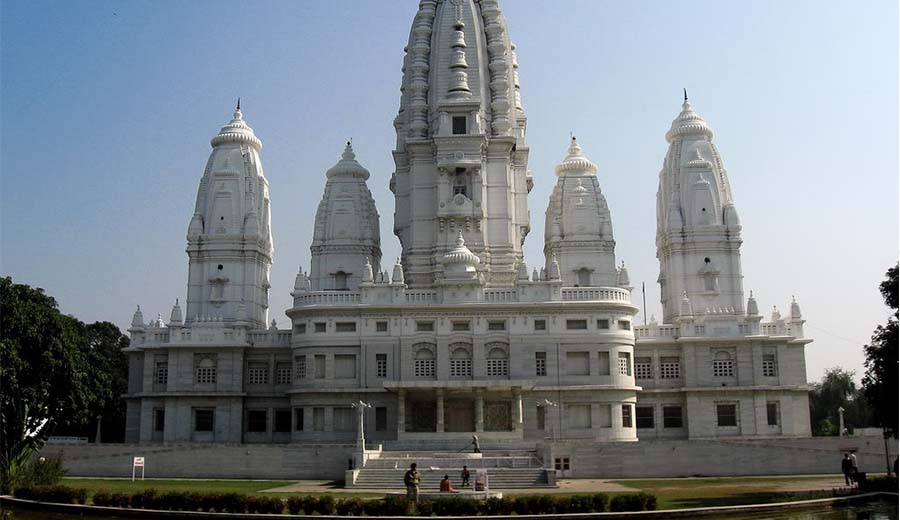JK temple
Facts to know about JK temple
JK Temple is likely a reference to a temple dedicated to the Hindu deity Lord Jagannath (Jagannatha) located in the Indian state of Odisha. The Jagannath Temple in Puri is one of the most famous and revered pilgrimage sites for Hindus and is considered one of the “Char Dham” pilgrimage sites in India. It is also a UNESCO World Heritage Site.
The Jagannath Temple in Puri, Odisha, India is a revered Hindu temple dedicated to Lord Jagannath, a form of Lord Vishnu. It is considered one of the most sacred places of worship for the Hindu religion and is visited by millions of devotees every year. The temple complex is located on the eastern coast of India, near the Bay of Bengal.
The temple is known for its unique architecture and sculptures, including the massive temple towers that rise high into the sky. The temple complex also includes a number of smaller shrines and halls, as well as a large courtyard where devotees gather to offer prayers and participate in religious ceremonies.
One of the most important festivals celebrated at the Jagannath Temple is the Ratha Yatra, or Chariot Festival, which takes place every year in the Hindu month of Ashadha (June/July). During the festival, Lord Jagannath, along with his brother Balabhadra and sister Subhadra, are taken out in a grand procession on large, beautifully decorated chariots through the streets of Puri.
In addition to its religious significance, the Jagannath Temple is also an important cultural and historical site, reflecting the rich history and traditions of the region. It has been designated a UNESCO World Heritage Site as an example of exceptional architectural and cultural significance.
Facts
Here are some interesting facts about the Jagannath Temple in Puri:
- The temple is one of the largest Hindu temples in India, covering an area of over 400,000 square feet.
- The temple was built in the 12th century and has undergone numerous renovations and additions over the centuries.
- The temple is known for its unique “Nilachakra” (blue wheel) symbol, which is displayed on the temple’s flag and represents the divine presence of Lord Jagannath.
- The temple is also known for its annual “Ratha Yatra” (chariot festival), which attracts millions of devotees and tourists from all over the world.
- Non-Hindus are not allowed to enter the main temple sanctum sanctorum, but they can visit the temple complex and participate in the Ratha Yatra festival.
- The temple is managed by a committee of priests and managed by the local government.
- The temple has a large kitchen that serves food to thousands of devotees every day, as part of the Hindu tradition of offering food to God and then distributing it to the needy.
- The temple has a rich history and is mentioned in several ancient Hindu texts, including the Skanda Purana and the Brahma Purana.
- The temple is one of the four “Dhams” (sacred pilgrimage sites) in India, along with the Rameswaram Temple in Tamil Nadu, the Dwaraka Temple in Gujarat, and the Badrinath Temple in Uttarakhand.
Dazzling Architecture of JK Temple
JK Temple Kanpur is known for its one-of-a-kind architecture and can be viewed as a mix of ancient and modern architecture. The mandaps of the temple have been outlined equitably in order to give ventilation. The equally outlined mandaps additionally consider the passage of regular light in the temple and give it an extraordinary atmosphere. A park and a carefully composed artificial lake add to the religious severity of the temple complex and make it extraordinary in reality. The park and the lake are lit up at the night and make the entire environment energetic and vivacious.
White marble has been utilized broadly in the complex and the temple complex is encompassed by three vaults which give the temple a dazzling look. The temple is known for its unique prasad which is known by the name of Mattha Bread. The arrangement is produced using buttermilk with bread and buttercream included. The prasad is served in the wake of morning aarti. Sundays are extraordinary at JK Temple as local people and tourists alike visit the temple in vast numbers and experience the uncommon prasad.
Shrines at JK Temple Kanpur
JK Temple can be thought to be a genuine collection of religious morals of Hindu mythology. The temple includes five particular holy places inside the primary temple complex. Places of worship committed to Lord Krishna and Radha, Lord Lakshminarayana, Lord Ardhnarishwar, Lord Narmadeshwar, and Lord Hanuman are arranged inside the fundamental temple complex of Radha Krishna Temple. The sanctuaries have been carefully carved out with valuable gems loving the statues. Complicated work has been done on internal dividers of the temple with valuable stones loving a portion of the engravings in the inward sanctum of the temple. Strikingly, the illustrations done on the internal dividers of the temple grandstand recorded stories that have religious essentialness and talk much about the rich past of Indian mythology.
instructions to Reach JK Temple Kanpur
JK Temple is midway situated in Kamla Nagar region of Kanpur city. Attributable to its one-of-a-kind architecture, the temple pulls in an extensive number of tourists from everywhere throughout the nation who approach Kanpur as a component of a religious stay which likewise incorporates an outing to different urban areas of the state having religious essentialness. Kanpur air terminal is situated at a separation of 15 km from the temple complex and cabs can be employed from the airplane terminal itself for paying acquiescence at the JK temple. In the case of going by rail, the Kanpur Anwarganj railroad station is situated at a separation of 5 km. Auto rickshaws and cabs can be contracted from the railroad station for an excursion to the temple complex.
Best Time to Visit JK temple
JK Temple Kanpur is open consistently. Early mornings and late night hours are the best time to visit the temple complex as you can ponder in peace and appreciate the flawless atmosphere of the place.
JK temple FAQ
Here are some frequently asked questions about the Jagannath Temple in Puri:
What is the Jagannath Temple in Puri?
The Jagannath Temple in Puri is a revered Hindu temple dedicated to Lord Jagannath, a form of Lord Vishnu. It is considered one of the most sacred places of worship for the Hindu religion and is visited by millions of devotees every year.
Who built the Jagannath Temple in Puri?
The Jagannath Temple in Puri was built in the 12th century by King Anantavarman Chodaganga Deva.
Is the Jagannath Temple in Puri open to everyone?
Non-Hindus are not allowed to enter the main temple sanctum sanctorum, but they can visit the temple complex and participate in the Ratha Yatra festival.
What is the significance of the Ratha Yatra festival at the Jagannath Temple?
The Ratha Yatra festival is a major Hindu festival celebrated at the Jagannath Temple in Puri. During the festival, Lord Jagannath, along with his brother Balabhadra and sister Subhadra, are taken out in a grand procession on large, beautifully decorated chariots through the streets of Puri.
What is the history of the Jagannath Temple in Puri?
The Jagannath Temple in Puri has a rich history and is mentioned in several ancient Hindu texts, including the Skanda Purana and the Brahma Purana. The temple was built in the 12th century and has undergone numerous renovations and additions over the centuries.
How is the Jagannath Temple managed?
The temple is managed by a committee of priests and is governed by the local government.
What is the architectural style of the Jagannath Temple in Puri?
The Jagannath Temple in Puri is known for its unique architecture and sculptures, including the massive temple towers that rise high into the sky. The temple complex also includes a number of smaller shrines and halls, as well as a large courtyard where devotees gather to offer prayers and participate in religious ceremonies.
Festivals
The Jagannath Temple in Puri is famous for several important Hindu festivals that are celebrated throughout the year. Some of the most significant festivals include:
- Ratha Yatra: The Ratha Yatra festival, also known as the Chariot Festival, is one of the most important festivals celebrated at the Jagannath Temple. During the festival, Lord Jagannath, along with his brother Balabhadra and sister Subhadra, are taken out in a grand procession on large, beautifully decorated chariots through the streets of Puri.
- Snana Yatra: The Snana Yatra festival is held during the Hindu month of Jyestha (May/June) and marks the beginning of the Ratha Yatra season. During the festival, Lord Jagannath, Balabhadra and Subhadra are bathed in scented water and worshipped by devotees.
- Dola Yatra: The Dola Yatra festival is held during the Hindu month of Phalguna (February/March) and is a celebration of the divine love between Lord Jagannath and his consort, Devi Lakshmi.
- Niladri Bije: The Niladri Bije festival marks the return of Lord Jagannath, Balabhadra and Subhadra to their temple after the Ratha Yatra festival.
- Holi: The festival of Holi is celebrated at the Jagannath Temple with great fervor and enthusiasm, marking the victory of good over evil and the arrival of spring.
These festivals are attended by millions of devotees from all over the world, making the Jagannath Temple in Puri a hub of religious activity and cultural exchange throughout the year.
Temple Timing
The Jagannath Temple in Puri has specific timings for darshan (visiting the temple for prayers and worship) and other activities. Here are the temple timings:
- Darshan Timings: The temple is open for darshan from 5:00 AM to 11:00 PM.
- Aarti Timings: The temple performs several aartis (prayer rituals) throughout the day, including Mangal Aarti at 5:00 AM, Raja Bhoga Aarti at 12:00 PM, and Sandhya Aarti at 7:00 PM.
- Seva Timings: Special sevas (offerings and rituals) can be performed at specific times during the day, including Abakasha Seva, Mailam Seva, and Pallaki Seva.
It’s advisable to check the official temple website or contact the temple management for the latest timings and any changes or updates.



